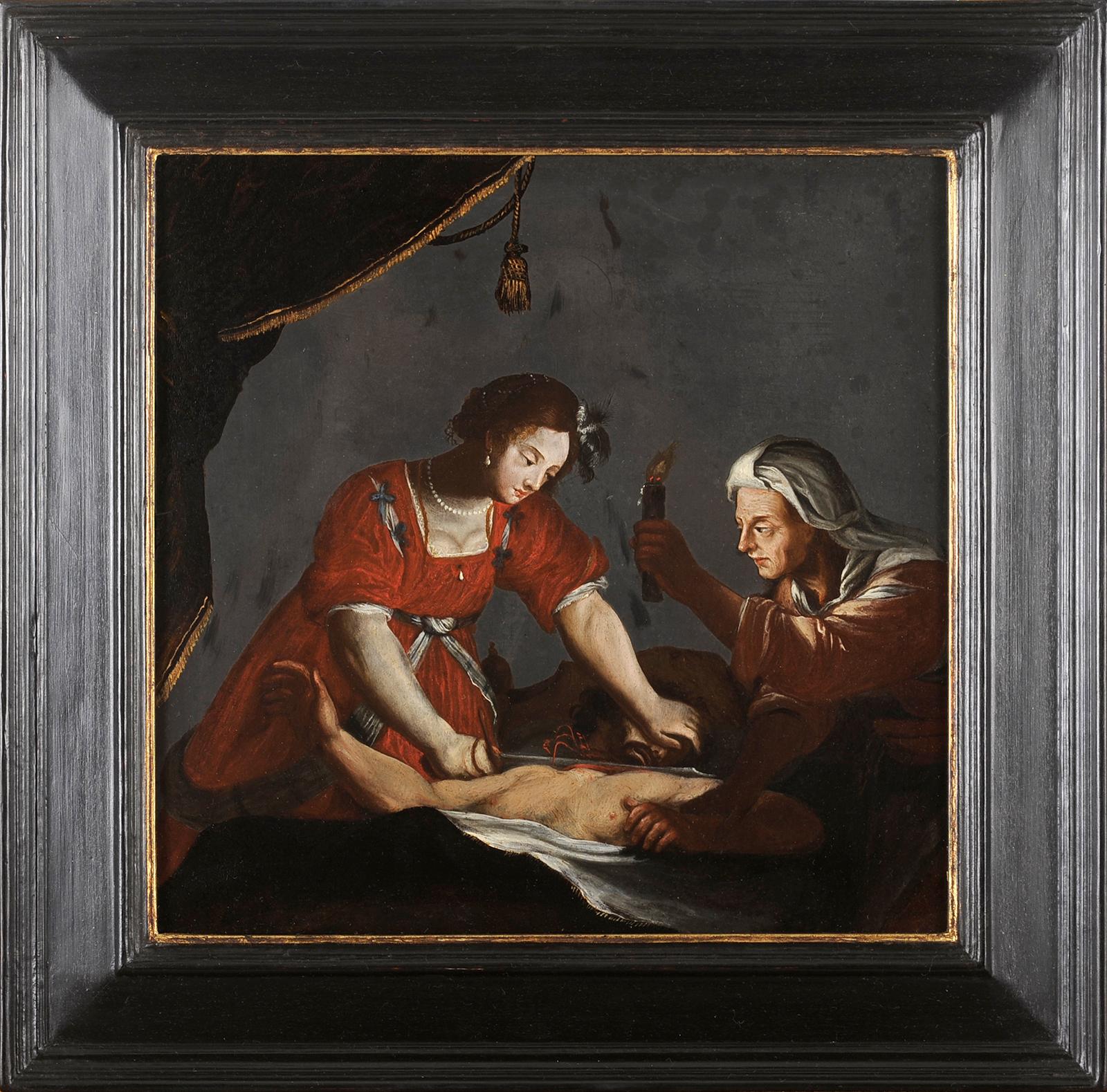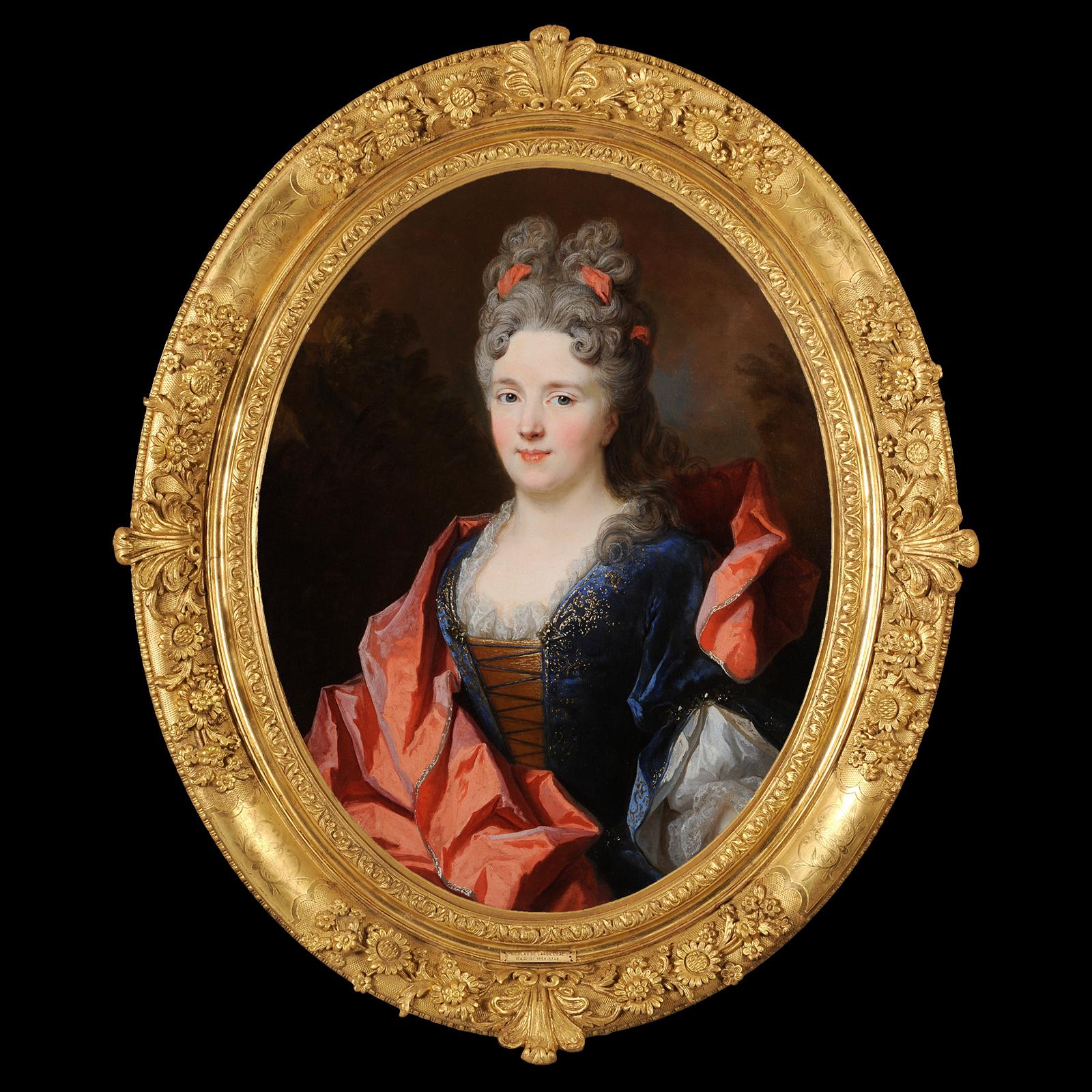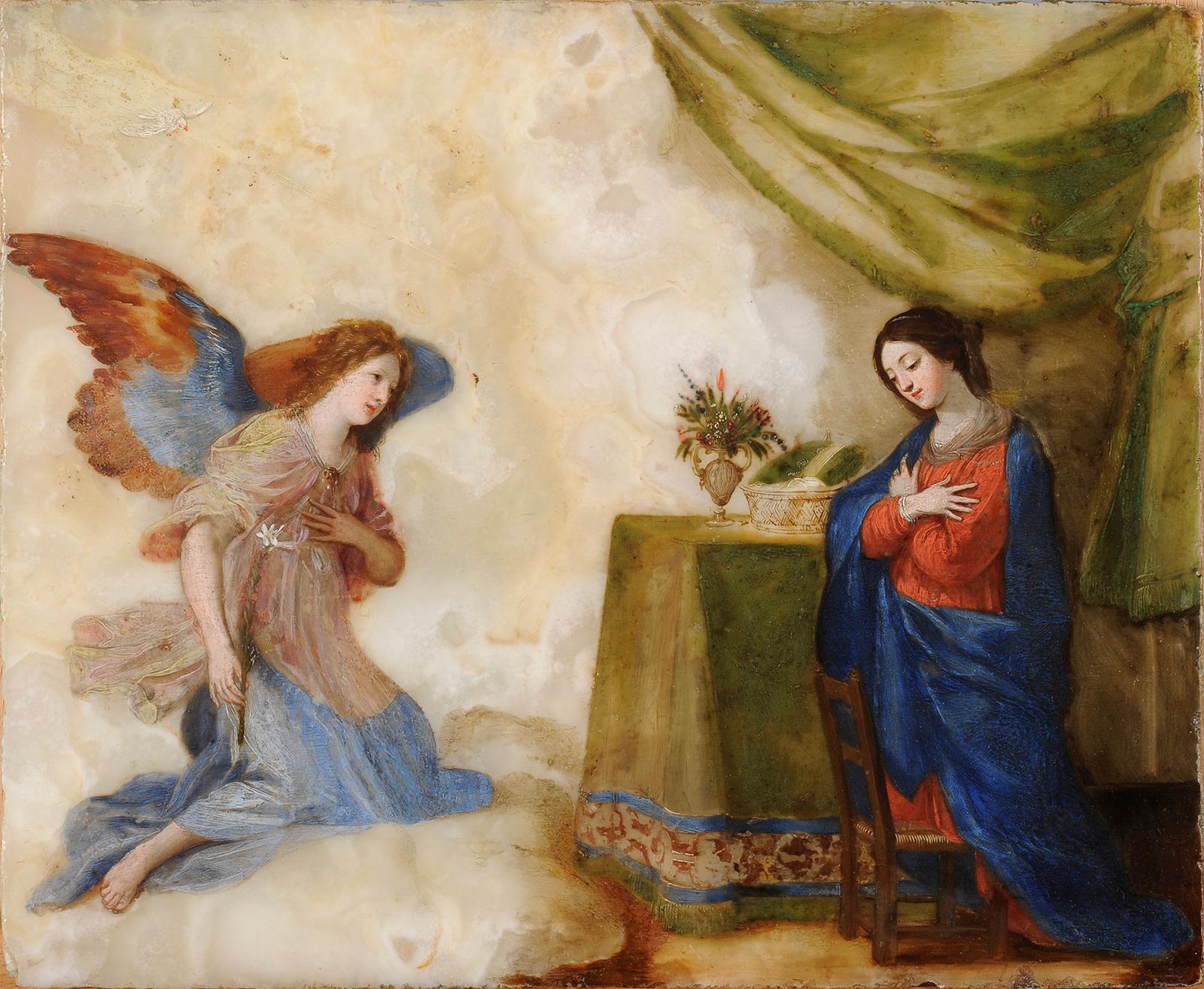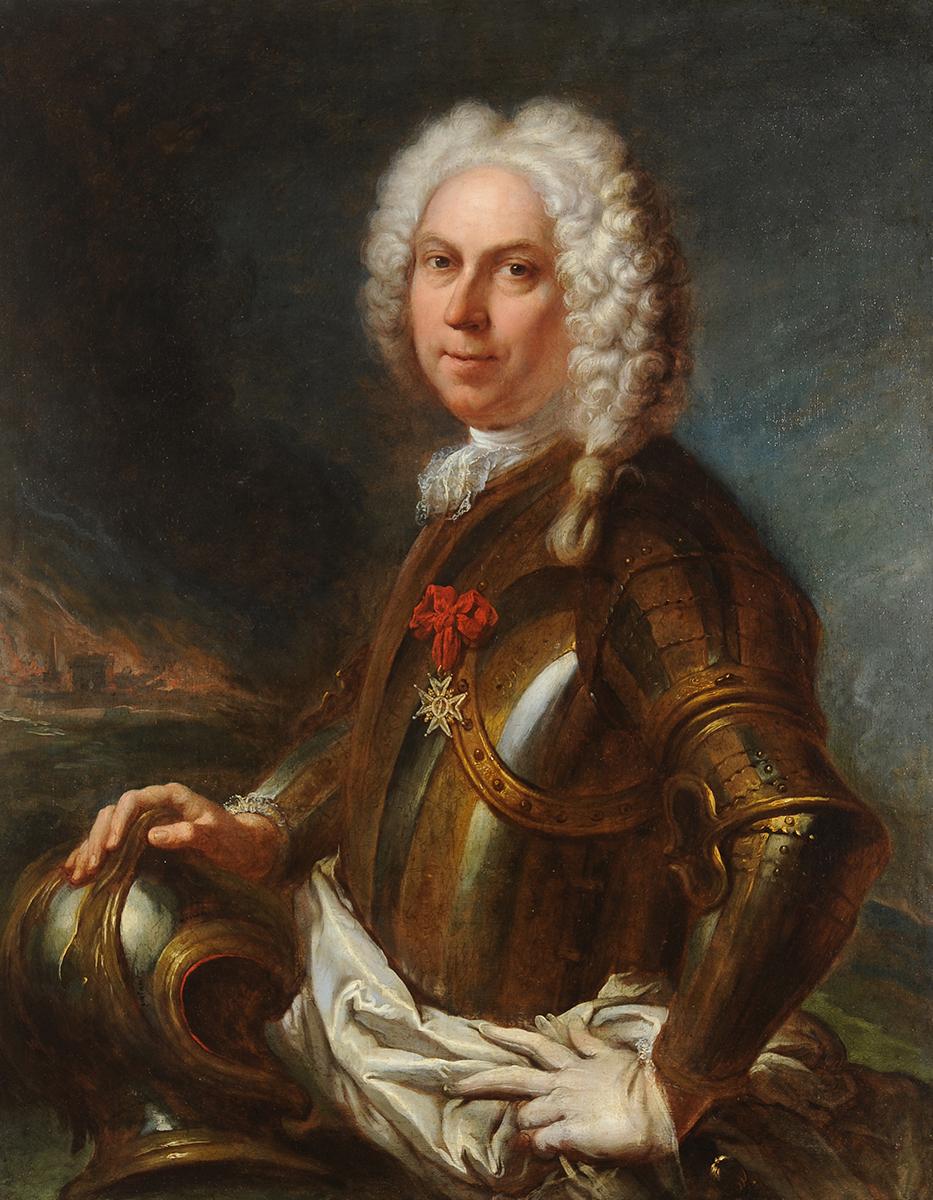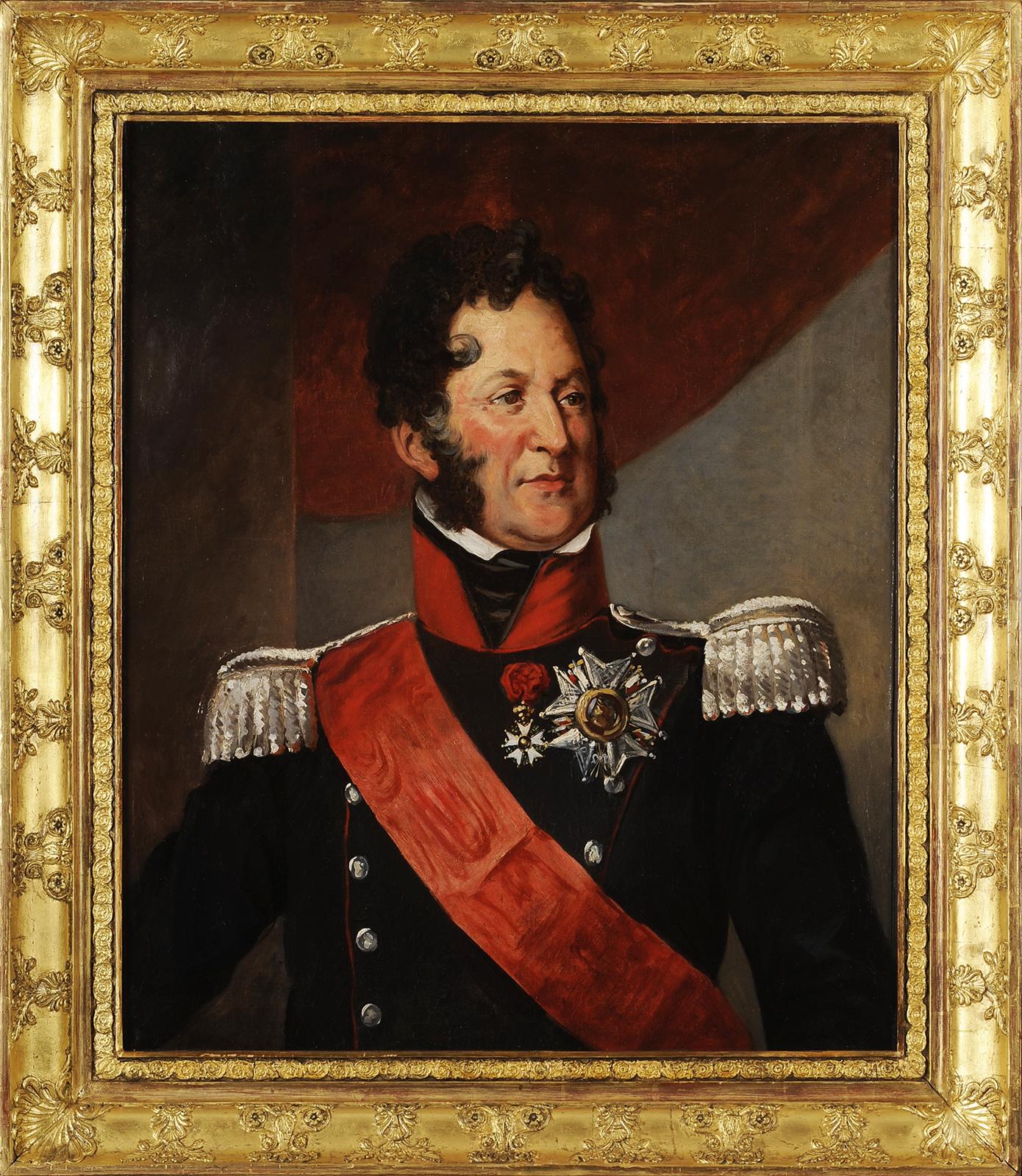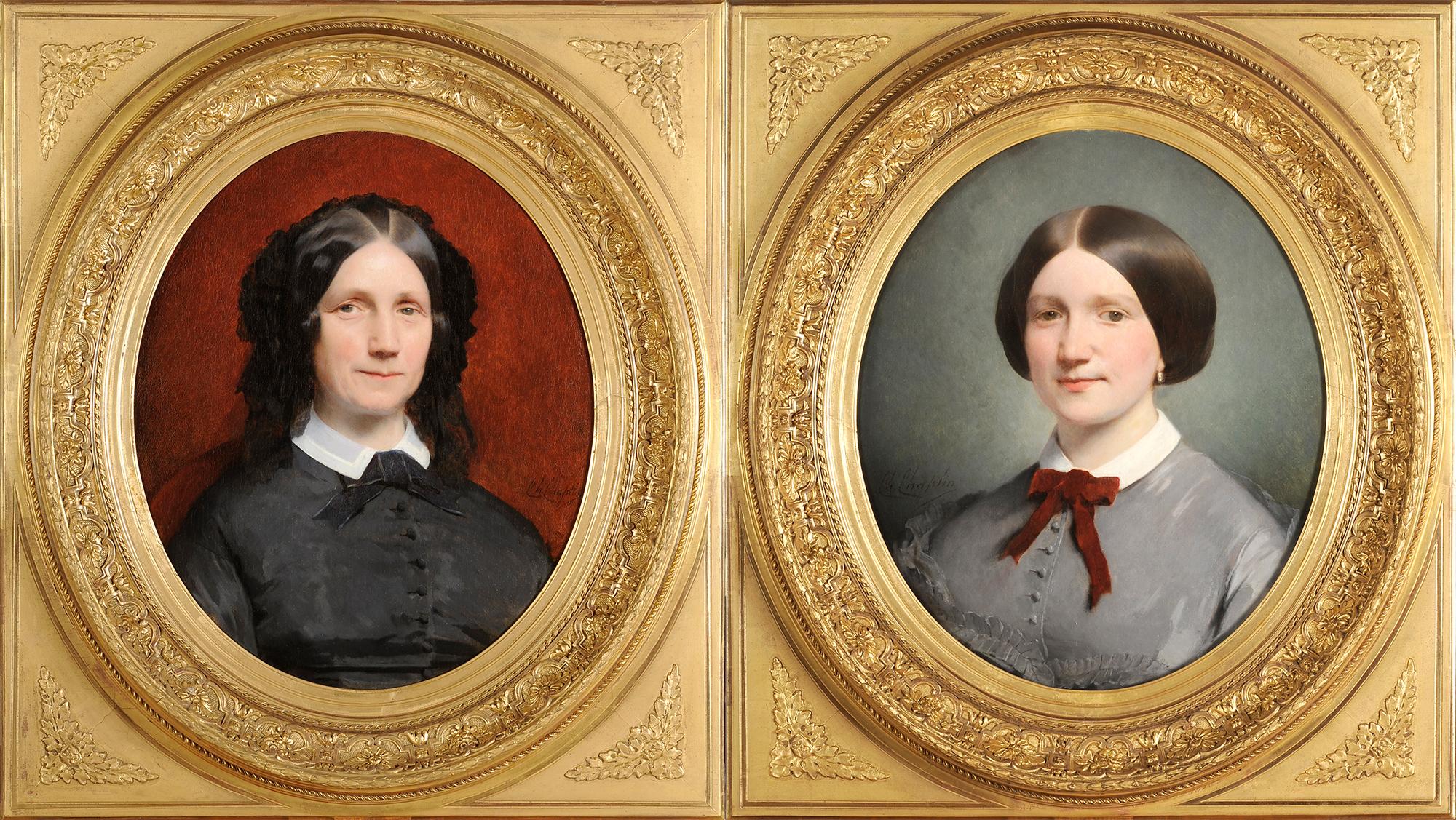Items Similar to Portrait of a young woman in a crimson dress
Want more images or videos?
Request additional images or videos from the seller
Louis Léopold BoillyPortrait of a young woman in a crimson dress
About the Item
Louis-Léopold BOILLY
(La Bassée 1761 - Paris 1845)
Portrait of a young woman in a crimson dress
Oil on canvas
H. 22 cm; L. 17 cm
Louis-Léopold Boilly, born in La Bassée, in the north of France, on July 5, 1761, died in Paris on January 6, 1845. Son of a modest woodcarver, our artist is largely self-taught. This trait may come as a surprise on the part of a painter whose paintings often show sophisticated construction and refined execution. He began to paint early and received his first commissions at the age of eleven. At thirteen and a half, he freed himself from his father's guardianship to benefit from the protection of one of his parents in Douai. In 1779, noticed by the bishop of the city, he left for Arras where he acquired a reputation as a portrait painter which would have earned him up to three hundred commissions. It seems that it was in Arras that he learned to paint trompe-l'oeil and grisailles under the direction of the painter Dominique Doncre (1743-1820). In 1785, he will settle in Paris which he will not leave until his death. He participated for the first time in the Salon in 1793 and exhibited there regularly until 1824. During the Terror, denounced to the Committee of Public Safety for having painted subjects going against morality, he narrowly escaped the guillotine , showing his Triumph of Marat, now kept at the Museum of Fine Arts in Lille, (inv 1290 bis). His entire career has been devoted to two types of representations: genre scenes and portraits. Boilly remained a small-format painter all his life, working for an essentially bourgeois environment. Author of more or less licentious scenes at his beginnings before the Revolution, he evolved into representations of the daily life of his time. He painted his contemporaries better than any other, mixing genres with extraordinary brilliance. The use of trompe-l'œil and grisaille allow him to demonstrate his virtuosity but he also excels in caricature. Louis-Léopold Boilly is known today for these small characteristic portraits, always done in the same way, on well-primed canvases, stretched over small frames with keys and ornamented with massive frames. These works produced for all the bourgeoisie and the French aristocracy after 1790 are nowadays highly prized for their character and the lively appearance transcribed by Boilly. The realism of the flesh and fabrics still impresses to this day, as in our portrait, particularly well drawn and attractive.
- Creator:Louis Léopold Boilly (1761 - 1845, French)
- Dimensions:Height: 8.67 in (22 cm)Width: 6.7 in (17 cm)
- Medium:
- Movement & Style:
- Period:
- Condition:
- Gallery Location:PARIS, FR
- Reference Number:
About the Seller
No Reviews Yet
Vetted Seller
These experienced sellers undergo a comprehensive evaluation by our team of in-house experts.
Established in 2014
1stDibs seller since 2022
7 sales on 1stDibs
- ShippingRetrieving quote...Ships From: PARIS, France
- Return PolicyThis item cannot be returned.
More From This SellerView All
- Portrait of a child with blue eyesBy Charles Zacharie LandelleLocated in PARIS, FRCharles Zacharie LANDELLE (Laval, 1821 – Chennevières/Marne, 1908) Portrait of a child with blue eyes Oil on canvas Monogrammed and dated lower l...Category
Mid-19th Century French School Portrait Paintings
MaterialsOil
- Mignon regretting his homeland - Mignon aspiring to heavenLocated in PARIS, FRAry SCHEFFER (1795-1858), workshop of Mignon regretting his homeland Mignon aspiring to heaven Two oils on canvas in the same frame 44 x 22 cm each Mig...Category
Mid-19th Century French School Figurative Paintings
MaterialsOil
- Portrait of Jean Claude Pellegrini (1787-1854)Located in PARIS, FRFrançois Jean SABLET (Morges, 1745 – Nantes, 1819) Portrait of Jean Claude Pellegrini (1787-1854) Honorary Divisional Inspector of Bridges and Roads. Oil on canvas Monogrammed and dated lower right 30x25cm 1819 Painter of portraits, Jean François Sablet, originally from Morges, born November 23, 1745, is the eldest son of Jacob Sablet (1720–1798), bourgeois of this city, house painter, gilder, art dealer, and Suzanne Dupuis (1722–1775), settled in Lausanne from 1754. In 1767, on June 8, he prepared to leave to “improve in the art of painting” with a viaticum from the Council of Morges and a scholarship from Bern. In Paris, he was a pupil of Joseph-Marie Vien at the Royal Academy (1768–73). In 1772, he was joined by his younger brother Jacques, who in 1776 left for Rome to pursue a brilliant career there. François, he remains in Paris, goes almost unnoticed there having neither competed, nor received a prize, nor even exhibited. In 1774, he signed and dated the Portrait of the Count of Artois, as Colonel-General of the Swiss and Graubünden. In 1777, he married Marie Madeleine Borel, daughter of a wood merchant, and settled near the Quinze-Vingt at the Bastille, as a portrait painter. He entered the Masonic lodge of Celestial Friendship and therefore enjoyed a certain notoriety. He executed the portrait of Charles-Henri, Comte d'Estaing, engraved by Charles-Etienne Gaucher (1779). In 1781, L. Perrot reproduced two of his works from the cabinet of Madame de Saint-Maurice, Childhood in the Countryside and Visit to the Nurse, for the philanthropic society founded in particular by Louis d'Affry, captain of the Swiss Guards. . In addition to the fact that these subjects denote an ideal of benevolence under the aegis of Jean-Jacques Rousseau, they testify to relations with the Swiss milieu. Finally, the format and quality of two large full-length portraits Vestal pouring incense (1781) and the Offering to Hymen (1783) reflect her favor in society on the eve of the Revolution and, although in shadow, he is able to build life annuities. From this first stage are dated two sketchbooks in black chalk and red chalk of characters, interior scenes, theatrical evocations, including the Vestal Virgin pouring incense. He also signed a series of wash illustrations relating to mythology and other subjects taken from Ovid. In 1789, the political climate suddenly darkened, the amateurs left, dragging the artists with them. François Sablet took the road to Switzerland and, in January 1792, joined his brother in Rome, a genre painter in Italian costumes and portraits in nature called "conversation pieces", models from which François was to draw inspiration. François spent the summer in Genzano in the Roman countryside, where he also devoted himself to landscape and popular costumes. Beat d'Hennezel, their compatriot, evokes the evenings at the Sablets' with their artist friends, busy drawing portraits while exchanging heated remarks on the political situation. However, the events in Paris had repercussions in Rome. In January 1793 the French representative was assassinated, the French and other French speakers...Category
Early 19th Century French School Portrait Paintings
MaterialsOil
- Study of a Breton shepherdessBy Theodore ValerioLocated in PARIS, FRThéodore VALERIO (Herserange, 1819 – Vichy, 1879) Study of a Breton shepherdess Oil on canvas mounted on cardboard Bears the sale stamp at the bottom 31 x 22 cm Provenance: Sale o...Category
Late 19th Century French School Figurative Paintings
MaterialsOil
- Study for "The coronation of Tasso"Located in PARIS, FRAlexandre Toussaint MENJAUD (Paris, 1768 – Paris, 1832) Study for The coronation of Tasso Oil on paper mounted on canvas 37.5 x 29.5 cm Around 1819 Related work: Painting exhibite...Category
Early 19th Century French School Figurative Paintings
MaterialsOil
- People's woman of Venice, ItalyLocated in PARIS, FRHenri Auguste Cesar SERRUR (Lambersart, 1794 – Lille, 1876) People's Woman of Venice Oil on canvas Signed, located and dated 65 x 60 cm Venice 1850 Exhibitions: - Paris Salon of 1...Category
Mid-19th Century French School Figurative Paintings
MaterialsOil
You May Also Like
- Judith and HoloferneLocated in BELEYMAS, FRJacques STELLA (Lyon, 1596 – Paris, 1657) Judith and Holofernes Oil on slate H. 23.5 cm; L. 24 cm Son of François Stellaert, a painter of Flemish origin who settled in Rome in 1576, then in Lyon, Jacques Stella was born in this city in 1596. Around 1619, he left for Florence where he worked for Cosimo II de Medici. He probably already met Nicolas Poussin and Jacques Callot there. Stella left Florence for Rome in 1622 or 1623, where he befriended Poussin, who arrived in 1624. Stella became famous in the world of Italian amateurs for his small paintings painted on precious supports: marble, agate, lapis, slate, as well as by his engravings and drawings. In 1634, having received offers from the King of Spain, he left Rome in the suite of Marshal de Créqui, French ambassador. He passed through Venice, stopped in Lyon in 1635, then in Paris. Retained by Richelieu who took him into his service, he settled in the capital of the kingdom. Covered with favors, he benefited from accommodation in the Louvre and a considerable pension. He later received the Collar of the Order of Saint-Michel, a rare honor for an artist...Category
1620s French School Figurative Paintings
MaterialsSlate
- Presumed portrait of Princess de Conti, Marie-Anne de BourbonBy Nicolas de LargillièreLocated in BELEYMAS, FRNicolas de LARGILLIERRE (Paris 1656 – 1746) Portrait of a woman, presumed to be Marie-Anne de Bourbon, Princess of Conti (1666-1739) Oil on oval canvas H. 80 cm; L. 61 cm (107 x 91 c...Category
1730s French School Figurative Paintings
MaterialsCanvas, Oil
- The AnnunciationLocated in BELEYMAS, FRJacques STELLA (Lyon, 1596 - Paris, 1657) The Annunciation Oil on alabaster (single old break perfectly restored) H. 25 cm; W. 30 cm Son of François Stellaert, a painter of Flemish ...Category
1620s French School Figurative Paintings
MaterialsAlabaster
- Portrait of a man in armorLocated in BELEYMAS, FRAttributed to Jacques DUMONT aka DUMONT LE ROMAIN (Paris 1701 - 1781) Presumed portrait of Louis-Joseph de Formanoir (?-1732) Oil on canvas H. 91.5 cm; ...Category
1750s French School Figurative Paintings
MaterialsCanvas, Oil
- French King Louis-Philippe - After Baron GérardLocated in BELEYMAS, FRAfter Baron Gérard, circa 1835 Portrait of King Louis-Philippe Oil on canvas H. 79 cm; L. 65 cm Provenance : Private collection, Périgord, by descent since the 19th century This po...Category
1830s French School Figurative Paintings
MaterialsCanvas, Oil
- Pair of women portraitsBy Charles ChaplinLocated in BELEYMAS, FRCharles CHAPLIN (Les Andelys 1825 – Paris, 1891) Portraits of women Pair of oils on rectangular canvases H. 60 cm; L. 50 cm Signed Student of Michel Martin Drolling at the École des...Category
1850s French School Figurative Paintings
MaterialsCanvas, Oil
Recently Viewed
View AllMore Ways To Browse
Oil Portrait Of A Woman
Oil Painting Portrait Of A Woman
This Is Not A Self Portrait
Portrait Young Woman
Portrait Of Young Woman
Portrait Of A Young Woman
Half Portraits
Louis Portrait
Portrait Of Louis
Author Portrait
Portraits Of Authors
Small Framed Portrait Painting
Small Oil Portrait
Antique Woman Portrait
School Dress
Young Louis
French Woman Portrait
19th Century Painting Of A Woman
